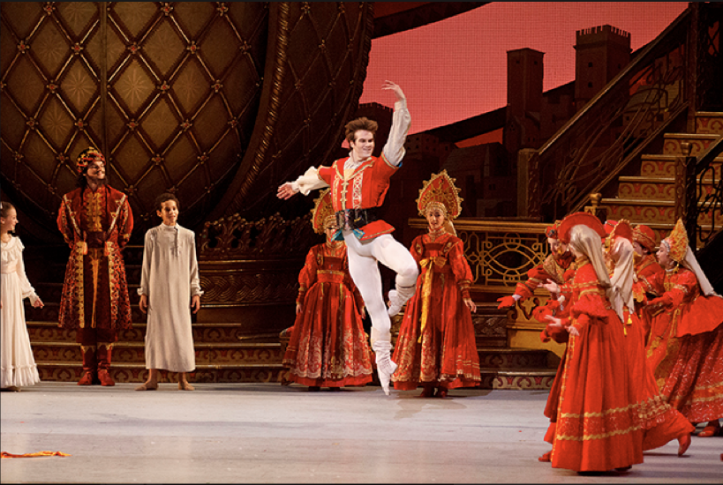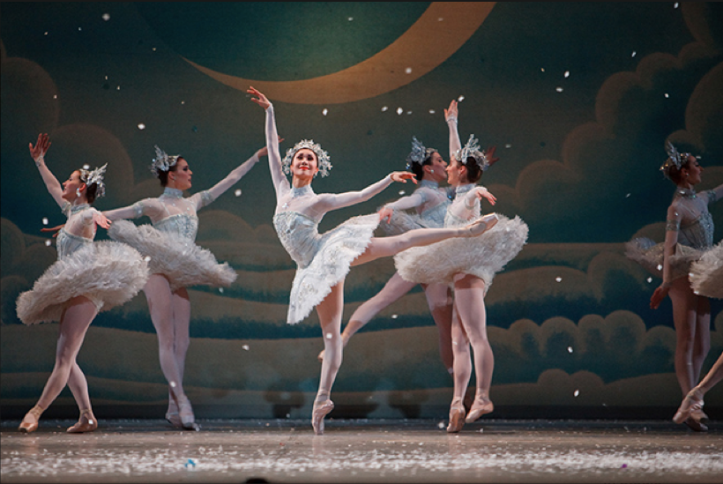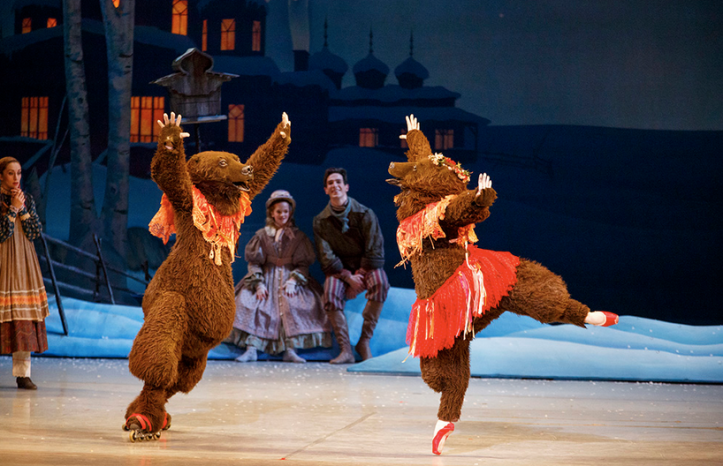Originally published by The Dance Current through The National Ballet of Canada’s Emerging Dance Critics program: http://www.thedancecurrent.com/column/its-original-russian
By Emily Trace
From Johnny Cash to Tchaikovsky, James Kudelka specializes in personalizing iconic stories and music that audience members think they already know by heart. His disarmingly heartfelt interpretation of The Nutcracker for The National Ballet of Canada runs December 12 through January 3 at the Four Seasons Centre for the Performing Arts.
The ballet opens with young siblings Marie and Misha helping the stable boy, Peter (McGee Maddox), and their Baba (Rebekah Rimsay) prepare the stable for a Christmas dance that will be attended by their patrician parents, the townsfolk and mysterious Uncle Nikolai (Robert Stephen). That night it’s ambiguous whether they share a dream inspired by Nikolai’s magical feats earlier … or if he chooses them for an adventure in the entrancing world of Act II.

Maddox dances Peter, later The Nutcracker, with glorious vitality. A natural actor, his powerful execution of weightless jetés reads as joyfully reckless. If Nikolai is indeed gatekeeper to the marvellous realm of Act II, then Kudelka and Maddox show why Peter is chosen to become The Nutcracker. The character enchants everyone with a magic entirely his own. He is fiercely admired by the children, and even their prim mother flirts a little before her stern husband whisks her away. Despite being a stable boy, Peter exudes nobility in how he treats others, more a prince at heart than the aristocrats who employ him.

In Act II, principal dancer Heather Ogden’s angelically graceful Sugar Plum Fairy honours the children for protecting The Nutcracker from the Tsar of the Mice. After dances from the chocolate and coffee envoys, a flock of sheep and four waiters, she re-emerges for a sincerely romantic pas de deux with Peter. In stark contrast to Marie and Misha’s distant and disinterested parents, Maddox and Ogden’s easy trust in partnering with one another evokes a connection between the characters based on mutual respect and affection. There are tender moments built in for the audience’s adults – memorably when Peter leads the fairy in a turn balanced on his arm, he significantly turns his palm upwards along with his gaze and she holds both while repeating the same step with new meaning. Unlike many traditional balletic heroes, Peter doesn’t win the Sugar Plum Fairy’s heart with stereotypical masculinity; he can’t even win a battle against mice. Not a soldier, Peter instead is beloved for being kind, gentle and trustworthy.

Other standouts include two expressive students from Canada’s National Ballet School, Jacqueline Sugianto and Adam Hone, as Marie and Misha. Distinguishing themselves as responsive ensemble members, the pair helped younger students playing the lambs catch up with their music after the flock was engrossed by Chelsy Meiss’s captivating turn as the Sheep.
In the Land of Snow’s thrilling pas de trois, Xiao Nan Yu, Ben Rudisin and Brendan Saye hit every climactic crescendo as the Snow Queen and her Icicles. Following them, the harmony between the eighteen Snow Maidens and the orchestra is breathtakingly in sync, highlighting some of the show’s plummiest (or sugar-plummiest) music. Finally, Robert Stephen’s exhilarating Cossack dancing and commanding a-la-seconde turns in Act II garnered applause from the audience while he was still in motion.

Danced with sigh-inducing virtuosity, Kudelka’s The Nutcracker also incorporates a historical texture that explores what’s created in translation when children interpret their culture. The Romanov aristocracy was famous for imitating Europe to distance themselves from their Slavic roots, perceived then as too savage for polite society. The luscious set and costumes designed by Santo Loquasto recall both the intoxicating splendour and ethnic identity that existed side by side in Imperial Russia.

This contrast between the children’s fashionably European family and the traditionally Slavic peasants lets all the parents in the audience know who is actually raising these children. Marie and Misha are corralled, comforted and corrected exclusively by Peter and their Baba in Act I. The children participate in a coldly formal dance with their stylish parents, but they’re far more engaged in the passionate community spirit among servants and townsfolk. In the enchanted world of Act II, however, the contrasting elements of their two cultures flow together harmoniously.

Given that the orchestra and dancers have a demandingly tight rehearsal schedule for The Nutcracker, sometimes a soloist will be one beat ahead of Conductor David Briskin, or a rare pitchy note might be heard from the horn section. While this never detracts from a consistently marvellous show, The National Ballet was soaring above the top of their game during the opening night performance of their twentieth anniversary run.
Depicting an Imperial Russia that celebrates nobility of spirit over nobility of birth, Kudelka creates a world where characters are rewarded for playing against type. Courageous children protect the adults, and men become heroes through gentleness.
Twenty winters on stage, The Nutcracker remains a beloved production that can still make an icy breeze feel like a thrilling, redemptive brush with a gentler world.
The National Ballet of Canada performs The Nutcracker from December 12, 2015, through January 3, 2016, at the Four Seasons Centre for the Performing Arts in Toronto.